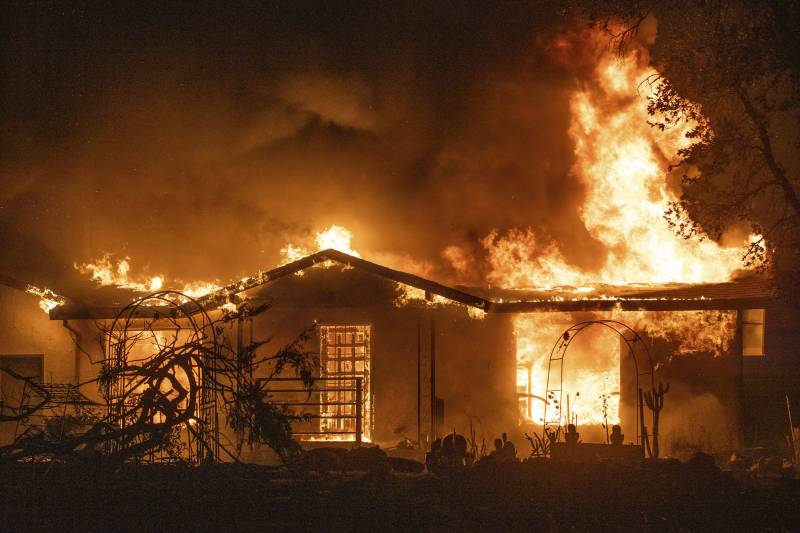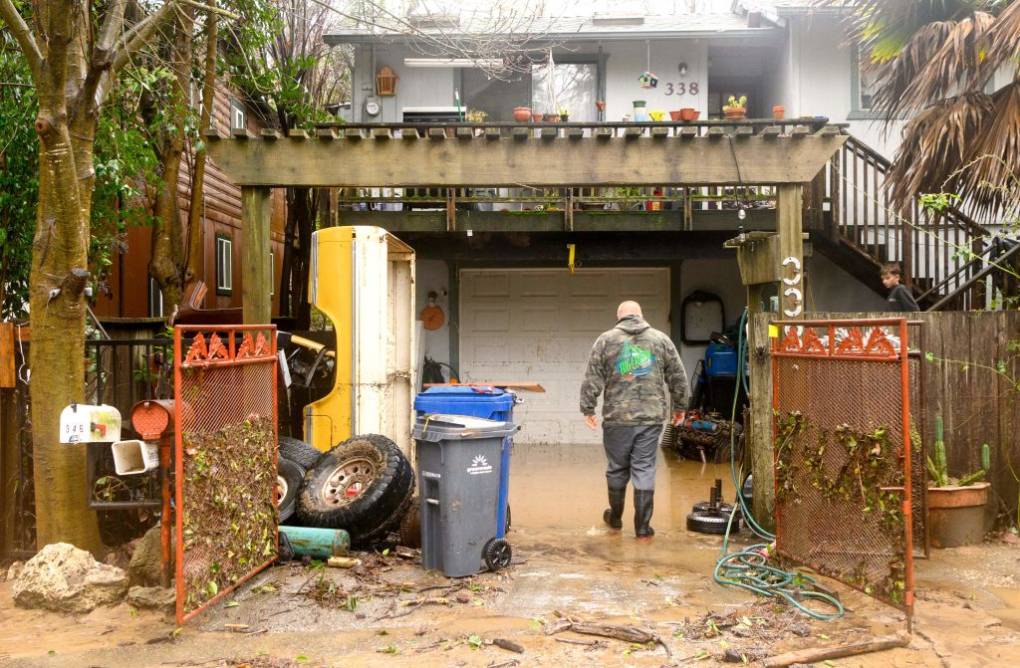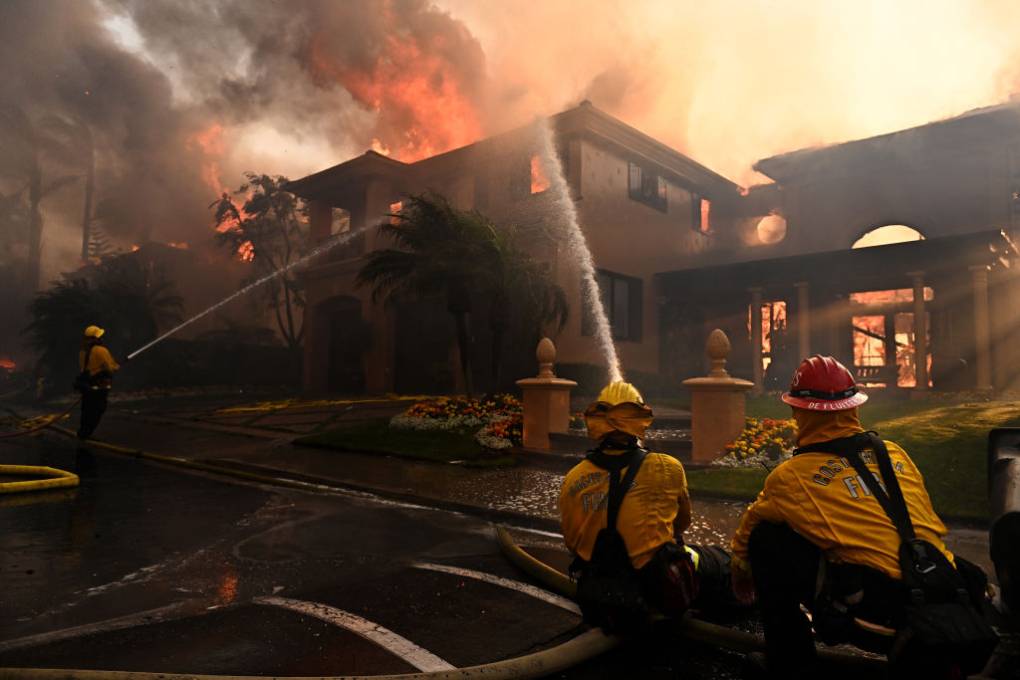“State Farm sort of publicly said what they were doing, but I think for the last few years, we’ve all seen insurers restricting and pulling back their business in California,” said Seren Taylor, vice president of Personal Insurance Federation of California, an industry trade group that counts State Farm as a member.
State officials emphasized that State Farm’s current policyholders will not lose coverage.
“It’s important to note that current customers will not lose their insurance,” wrote Michael Soller, deputy insurance commissioner at California’s Insurance Department, in an email to CalMatters. This decision will affect people who are shopping for home insurance, in that they will have one fewer provider to choose from.
State Farm in a press release blamed high construction costs that make it extra expensive to rebuild after a home is destroyed in California, growing natural disaster risk — particularly from wildfires — and “a challenging reinsurance market.”
Insurance companies frequently purchase their own insurance — known as “reinsurance” — to minimize the risk of getting hit with millions of dollars of costs all at once, as might happen during a catastrophic wildfire or a major hurricane.
Reinsurance premiums have spiked in recent years in disaster-prone states like fire-ravaged California and storm-battered Florida, Louisiana and Texas. California law prohibits insurers from passing along the cost of reinsurance to customers. Industry groups are lobbying to change that.
“This is tough for legislators,” said John Norwood, a lobbyist for independent insurance brokers. “Because the solution is prices going up.”
How California regulates home insurance
High rebuild costs, increasingly severe wildfires and high prices of reinsurance all are risks that insurance companies might be willing to take on.
But only for the right price.
Increases in insurance premiums in California are approved or denied by the state’s elected insurance commissioner, Ricardo Lara. Industry groups have long argued that Lara’s office has not allowed providers to set prices commensurate with the cost of doing business in fire-prone California.
“We have very inexpensive home insurance in California,” compared to other states, said Michael Wara, director of the climate and energy policy program at the Stanford Woods Institute for the Environment. “But the thing is, five years ago, we realized, ‘Oh, yeah, actually in California you can burn down 50,000 houses overnight.’”
The consequences of a continued drip-drip decline of insurers from California could be far more costly in the long run, warns Dan Dunmoyer, president of the California Building Industry Association.
As an illustration, he points to California history. After the 1994 Northridge earthquake dealt roughly $42 billion in damage across Southern California, many home insurers opted to stop doing new business in California entirely.
Because home insurance is a basic requirement for most home loans, the exodus of insurers caused the state real estate industry to grind to a halt, Dunmoyer recalled.
“The whole world stopped,” he said. “That’s the worst-case scenario. We’re not quite there yet.”
Can California block State Farm’s retreat?
There are various ideas circulating — some more drastic than others— about what the state can do to keep State Farm in the market.
The advocacy group Consumer Watchdog on Tuesday argued that Insurance Commissioner Lara has the power to order State Farm to reverse its decision. That authority, the group said, comes from Proposition 103, a voter-backed initiative passed in 1988 that gave the department the power to approve or deny premium increases.
Wara, from Stanford Law, said the idea was a “nonconstructive approach to this problem.”
He said the entire insurance industry likely would sue the state if the California insurance department were to assert that authority, and the lawsuit would take several years to resolve. He said he finds it “hard to believe” that a court would force the industry to keep issuing new insurance policies during the years the case was in court.
“That is a recipe for the entire market falling apart, potentially overnight,” Wara said. “That would undo not just the insurance market, but everybody that has a home mortgage in California, everybody that wants to buy or sell a home in California.”
Last resort for California homeowners
Another sword hanging over the state’s insurance industry: The possible demise of the FAIR Plan, the limited insurance plan Californians can turn to when no standard private company will cover them. It’s funded by levies on private insurance companies that do business in the state.
“A lot of other insurers have stopped selling,” said Amy Bach, executive director of United Policyholders, a consumer group. “If you talk to an agent or broker today, they’re going to tell you it can be pretty hard to find insurance” outside of the FAIR Plan, Bach said.
As the risk of catastrophic wildfire ramps up across California, that risk falls disproportionately on the FAIR Plan. And if an especially severe fire season renders the plan bankrupt, the tab will fall on those insurers still doing business in the state in proportion to their share of the market, said Wara.
State Farm, as the largest insurer, would have to chip in the most. That’s one reason the company might have decided to not issue new policies anywhere in California rather than just limiting new policies to places with low wildfire risk. “State Farm is saying ‘we want less of that,’” Wara said.
That problem isn’t unique to California.
In Texas, the increasing severity of Gulf Coast hurricanes has driven tens of thousands of homeowners onto that state’s chartered backstop insurer, leading to talk of an inevitable crisis.



